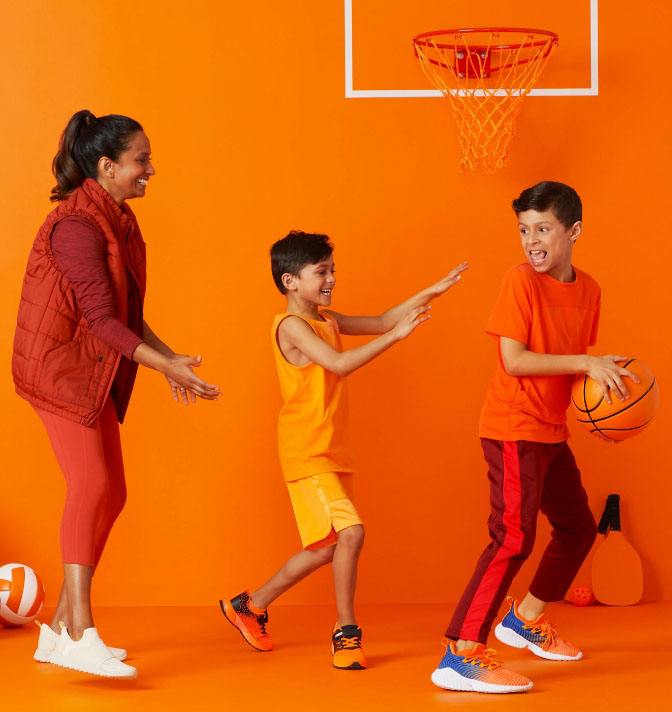Not every child is innately athletic, and the competitiveness of today’s youth sports can discourage middle-of-the-pack kids who, a couple of generations ago, would have made up the backbone of most school or Little League teams. This often leaves kids of average ability feeling there’s no place for them in sports — and, later in life, no place for them in the gym, yoga studio, or on the biking trail, either.
Girls are particularly prone to opting out. “By the time kids are 8 years old, there’s already a huge dichotomy between boys and girls in terms of activity,” says Mary Uran, cofounder of Girls on the Run Twin Cities. “That plays into problems with obesity, depression, and other risk factors later in life.”
Adding to this is the increasing presence of screen activities — watching TV, engaging with social media, and playing video games — which are associated with a higher obesity risk. “We’ve had kids in Girls on the Run who get no physical activity at all,” says Uran.
Long-term excessive screen time poses serious health risks. Children who watch three hours or more of TV daily are 65 percent more likely to become obese than those who watch less than an hour, according to an Active Living Research report.
For parents and children who tend to steer clear of sports and physical endeavors, experts offer the following guidance.
1. Model an Active Life
Want active kids? Get active yourself. For every 20 minutes of daily physical activity performed by a parent, Canadian researchers found, a child’s activity level rose by five to 10 minutes.
Modeling an active lifestyle may be one of the more powerful steps you can take in ensuring that your child enjoys activity and stays active for life, explains Jim Thompson, founder and CEO of the Positive Coaching Alliance.
“Your kids can be successful without sports,” he says. “But if you’re someone who shares your enthusiasm for exercise with your kids, they’ll get excited about it, too.”
For kids under 10, Thompson suggests sticking with noncompetitive activities. “Walk the dog with them. Toss a ball back and forth and count how many throws and catches you can get before a drop.” Instead of competing, work together to get better.
“Keep it positive,” he says, “and stay away from anything that suggests that their performance in competition determines how much you care about them.”
2. Find a Different Groove
How we’ve traditionally defined “sport” in the United States has limited our understanding of what it means to be active. Although organized, competitive team sports can be wonderful, they’re not suited to all children.
Experts encourage adults to expand their own views about what it means to be active and guide their children to explore hobbies that get their bodies moving. Yoga, walking, running, and cycling are great for kids who have more solitary dispositions — these activities can also be done as part of clubs, but they don’t have to be competitive.
There is an almost endless array of dance options open to beginners and kids of all ages: Ballet, tap, swing, contra, and Bollywood are just a few. Less-conventional activities, such as Ultimate Frisbee, circus arts, and even youth powerlifting, might also intrigue your child.
Unsure what activity to push your kid toward? Try asking instead of pushing. Find out what he or she enjoys and wants to master, and let that guide you.
3. Choose Your Words
Kids are sponges: The demeanor, actions, and words of the adults around them affect kids deeply, and they can sniff out insincerity a mile off. For more than 20 years, Thompson has been studying the best ways to communicate with young athletes. His conclusion? It’s not about buttering them up. “Feedback needs to be truthful and specific,” he says. “You can’t tell a kid he’s trying really hard if he’s screwing around.”
In difficult moments, a better technique is what Thompson calls the “You’re the kind of person . . . ” approach: “When a kid seems discouraged, it’s OK to acknowledge it,” he says. “But follow that up. You might say, ‘What I like about you is that you don’t stay disappointed. You come to the next practice ready to play and get better.’ Or ‘You’re the kind of person who doesn’t give up easily,’ or ‘You seem to enjoy trying hard, whether you win or lose.’”
Look carefully enough, he says, and you can find something exemplary in every kid’s behavior on a team. Maybe it’s supporting a teammate who’s upset or injured. Maybe it’s coming to practice with a smile. Maybe it’s cheering while waiting for a turn at bat.
“Part of the job of a parent is to be a noticer,” he explains. “And to acknowledge and praise the little things that the kid is doing well.” He calls this “filling the emotional tank,” and it’s an effective and powerful practice for fostering growth both on and off the field.
4. Encourage Active Play
“Culturally, in the mainstream, we’ve promoted sports as the best path to staying active,” says José González, a founder of Latino Outdoors, a program that promotes healthy outside activities for Latino kids and their families. This works perfectly for kids who thrive on goals and structure.
For other kids, sports can feel like work — but that doesn’t mean they’re lazy or inactive by nature. They may just crave a different approach.
“We too often devalue play — we say, ‘Quit playing around!’ like it’s something bad,” says González. “But at Latino Outdoors, we encourage the idea that nature should be a place to play and explore. So, they play tag, play hide-and-seek, climb trees, run.”
Competitive sports can be Darwinian at times: Regardless of how positive the atmosphere and supportive the coaching, kids can still get the impression that the strong survive and the weak get weeded out. Outdoor play is more forgiving. Public outdoor spaces are becoming increasingly accessible, and organizations like Latino Outdoors and Girls on the Run are helping kids of all shapes, sizes, ages, fitness levels, and cognitive abilities reclaim their right to move — and enjoy movement — together.
The lesson: In nature, there’s a place for everyone.
This article originally appeared in Experience Life, Life Time’s whole-life health and fitness magazine.




This Post Has 0 Comments